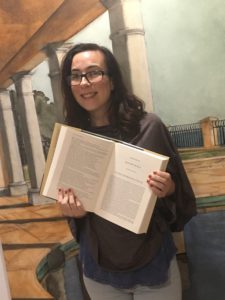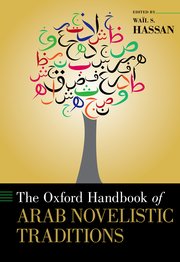In this piece MULOSIGE researcher July Blalack reflects on her book chapter on the history of Mauritanian novels and how it fits in with the larger project of The Oxford Handbook of Arab Novelistic Traditions (OUP 2017; edited by Waïl S. Hassan). The handbook showcases how the Arabic novel has developed in many different contexts shaped both by international circulation and by local multilingual environments.
The popular saying goes that Arabic books are written in Egypt, published in Lebanon and read in Iraq. However, with contributions locating Arabic literature in everywhere from France to Brazil to sub-Saharan Africa, The Oxford Handbook of Arab Novelistic Traditions shows that Arabic books have varied and often unexpected voyages. Answering the question “where are Arabic novels written and read” involves a tangle of geographies that both overlap and diverge, that sometimes take inspiration from each other and other times remain oblivious to each other. This volume also shows that none of the Arabic novelistic traditions grew in a monolingual vacuum, but rather are each in contact with a unique mix of different written and vernacular forms.
While writing about Mauritanian novels, I was inevitably inspired by the larger linguistic environment that this prose genre grew out of. I found that a simplistic metaphor of ‘importing’ the novel from Egypt or from Europe erased the literary forms that already existed in Mauritania prior to the publication of the debut novel in 1981. Even before the advent of a book market in Nouakchott, there existed poetry both in the Hassaniya dialect of Arabic and in Modern Standard Arabic, poetry and religious texts written in Ajami (African languages written in Arabic script), and oral traditions in Soninke, Wolof, and Pulaar. In terms of regional influences, many Mauritanian writers working in French took cues from the Négritude movement of other Francophone Africans, and Arabophone writers drew inspiration from Middle Eastern Nahda literature.

MULOSIGE researcher July Blalack with book chapter on the history of Mauritanian novels inThe Oxford Handbook of Arab Novelistic Traditions
My aim in composing the chapter was to show how these ingredients interacted with cultural and material changes to the country post-Independence and created an audience for the novel. While it is true that the novel is often overrepresented in World Literature, what this volume offers is a chance to recognize the multitude of written and vernacular forms that influence novel writers, even when they choose a dominant genre. This is similar to the reality that many authors who work in English are still influenced by their multilingual environments.
The Oxford Handbook of Novelistic Traditions provides many vantage points from which to teach Arabic literature as World Literature, African Literature, and/ or Diaspora Literature. Through assigning a chapter or a group of chapters, educators can give students a sense of how varied Arabic literary traditions truly are, and can encourage students to think critically about issues such as circulation, reception, multilingualism, and the creation of literary canons. The possibilities are as diverse as Arabic’s histories.



Leave A Comment